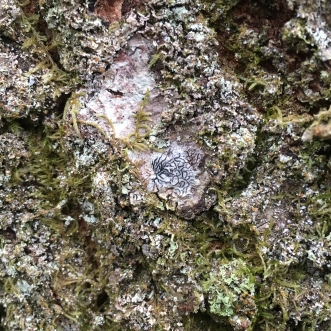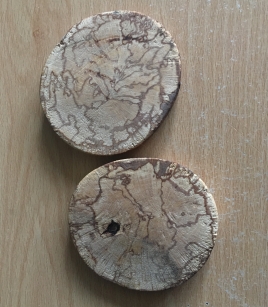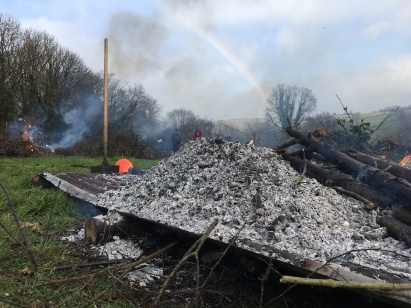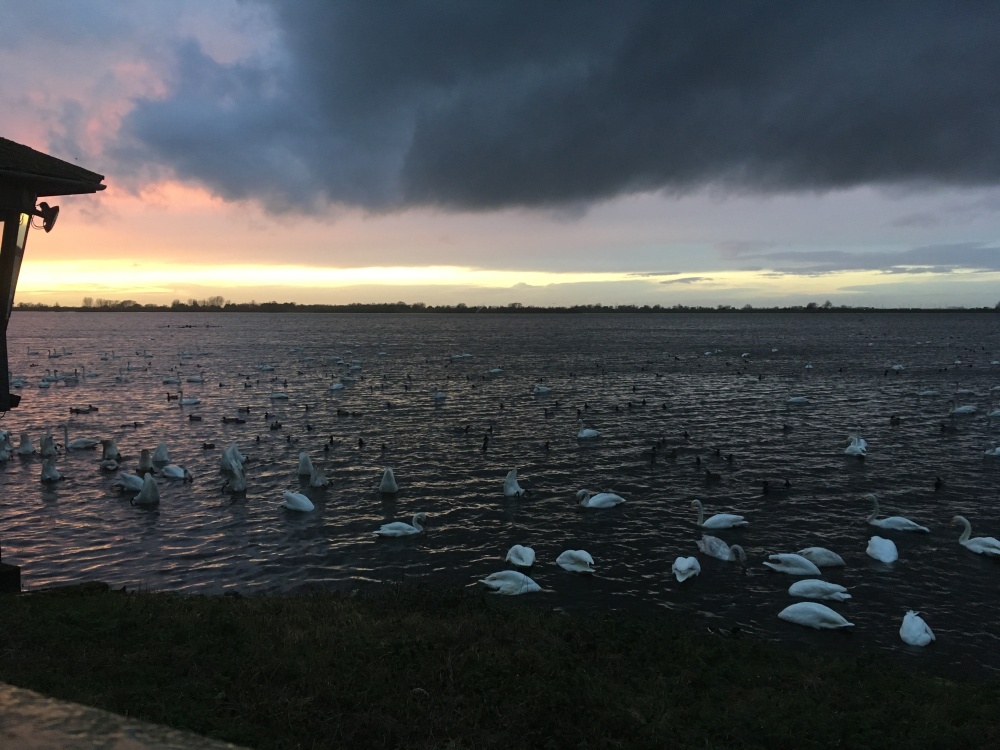Cover image: solstice morning on Stourbridge Common, Cambridge
With the winter solstice behind us and the days beginning to lengthen and stretch their way towards 2018, I’m enjoying some time back in the flatlands of East Anglia with my family. The last few months have been busy out on the reserves, with bridges to build, gates to hang and lots of scrub to clear, not to mention Christmas celebrations with our wonderful volunteer groups!
Back at the start of November the Devon Greater Horseshoe Bat project held a number of hedge-laying workshops. These were aimed at teaching people a rural skill, that has large benefits for wildlife, whilst helping out landowners who want their hedges laid but do not have the time or money to do so themselves. Simeon and I attended one of the workshops, at a primary school in the South Hams. Don from the Devon Rural Skills group led the day, showing us all how to tackle the slightly unruly hedge at the edge of the school playing field. It had never been laid before, and was an interesting mix of species – great for wildlife, but not so easy for hedge-laying! By the end of the day we had managed to lay about 30 ft of the hedgerow, perhaps not to the most professional standard, but we were all very pleased with our achievements. It was amazing to see what 10 willing people and some sharp billhooks can get done in a day – and gaining a new skill that I am sure will come in handy around Woodah and in the future!

Continuing with the fungal theme from my last post, on November 11th I took a trip a few miles up the valley to Deer Park Farm to attend their highly recommended Waxcap Walk. Due to a few early frosts Audrey warned us that the fungi were not in their usual abundance for this time of year, as a lot of the fruiting bodies had already disappeared. Waxcap fungi are found in nutrient-poor grassland, a habitat that in the UK is not so easy to find, as many landowners enrich their grasslands with synthetic fertilisers to create the lush, green-washed fields we so often see in countryside scenes. This practice decreases biodiversity and leads to species that thrive in nutrient-poor grasslands being outcompeted by dominant grasses. 97% of our unimproved grasslands have been lost in the last 70 years or so, but luckily more and more landowners, like Audrey and John at Deer Park Farm, are realising the benefits of farming organically, and are allowing nutrient-poor grasslands to flourish for wildlife. The meadows at Deer Park Farm are recognises as regionally important for their Waxcaps, so we were in for a treat as we went hunting for fungi! With Audrey on hand to help us identify what we found, we ventured into the meadows and started searching. Quickly it became apparent that even on a day when the meadows were lacking in fungi, there were still many species to be found! To name a few, we found the Oily Waxcap, Blackening Waxcap, Cedarwood Waxcap, Snowy Waxcap, the edible Meadow Waxcap (below left) and striking brightly coloured Parrot Waxcap. I imagine in times of abundance you would be falling over fungi in the fields of Deer Park Farm! Aside from Waxcaps, we also found Meadow Coral (below right), which as the name infers wouldn’t look out of place in the ocean, the pretty Petticoat Mottlegill (below centre), Earthy Powdercap and Lilac Pink-gill entoloma. Find out more about Deer Park Farm and their events here.
As well as delving into the world of fungi, I recently had the opportunity to attend a training day introducing attendees to lichens and bryophytes as part of the ‘Building Resilience in South West Woodlands‘ project run by Plantlife. The day was run to launch a citizen science survey that will help the project establish the amount and quality of Atlantic Oak Woodland in the project area. We spent the morning in a village hall having an introduction to the project, and what we will be looking for in the woodland. We then headed out to Andrews Wood to test out the survey method and try to identify a few key lichen species that are indicative of healthy Atlantic Oak woodland. Luckily there was no expectation of expert lichen knowledge – I wouldn’t know where to begin! Yet another area of ID to add to the list to learn….. Starting with the basics, a lichen consists of two (or more) organisms living symbiotically in one body. The fungal partner forms the fruiting body, sheltering the algal partner which in turn provides it food for growth. Lichens fall into four main growth categories, Crustose (crusty e.g. the ‘script’ lichen below), Foliose (leafy), Fruticose (shrubby e.g. Usnea sp., the ‘beard’ lichens) and Squamulose (scaly). And that’s about the extent of my lichen knowledge! Time to get some lichen keys out and go exploring the woods…

With Christmas approaching, I was on the hunt for festive gift ideas. Inspiration came in the form of a huge fallen Beech at The Rough, that Simeon and I helped Ed clear up and make safe. The tree had long been plagued by Ganoderma, a polypore fungus that causes extreme cubic rot within the heartwood. About half of the trees limb structure had failed, and fallen over the footpath, so the priority was to make the path safe for public use. With three chainsaws on the go we began dismantling the fallen tree, taking care to watch for any movement! We eventually managed to reduce the tree to a size and shape that we could winch over into a stable position where it could safely be left as a new habitat feature. In the process of cutting the timber into moveable sized chunks, I found a limb with lovely spalting within it, and saved a few lengths to take home to turn into coasters for christmas gifts! Spalting is created in timber when fungi meet, and put up mycelia barriers to protect their resources, leaving the dark lines that form the eye-catching patterning sort after by woodworkers.
To get some idea of the size of the limb that came down, the above (right) photo shows Ed, who is over 6ft tall, standing next to the tree!! After letting the timber dry out for a few weeks back at Woodah, I used a circular saw to cut coaster-sized slices off, and then filed/sanded them down before treating them with Danish Oil. Safe to say it is lucky I brought back more timber than I needed, as it turns out that trial and error (with quite a few errors!) is a key part of my woodworking technique….. but in the end I was very pleased with how they turned out, and far preferable to battling the high street shops for Christmas gifts!

The work year ended with a week of Christmas celebrations with our hard working volunteer groups, featuring many jacket potatoes cooked in the coals of scrub fuelled bonfires, large vats of chilli and stew, and of course many many mince pies! We also had the DWT staff Christmas lunch in Exeter which was a lovely chance to catch up with some people from head office who we don’t get to see so often!

After spending the last afternoon of 2017 watching the birds at WWT Welney, it is time to see in the New Year with a few friends! Happy New Year to you all – let’s see what 2018 has in store!





